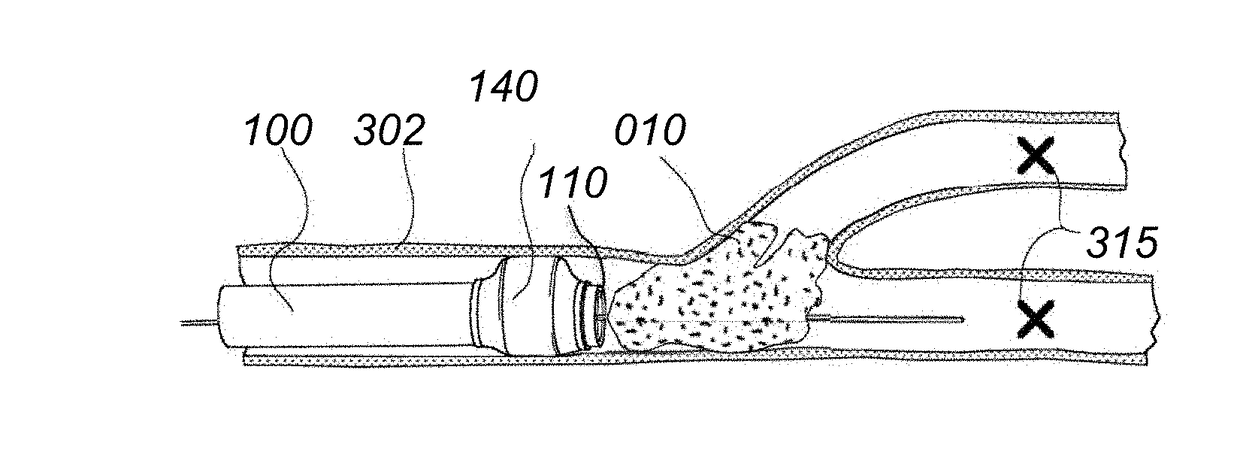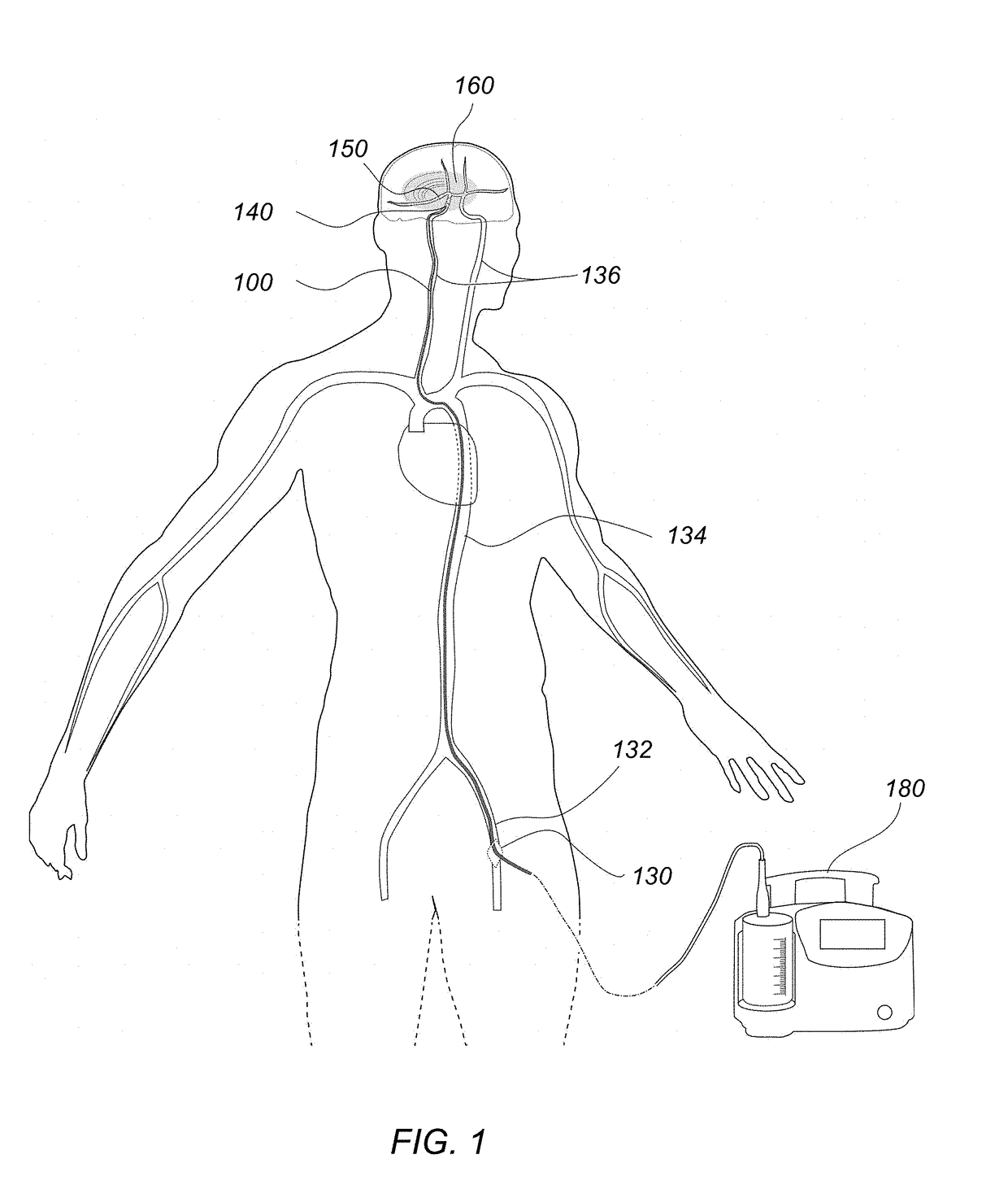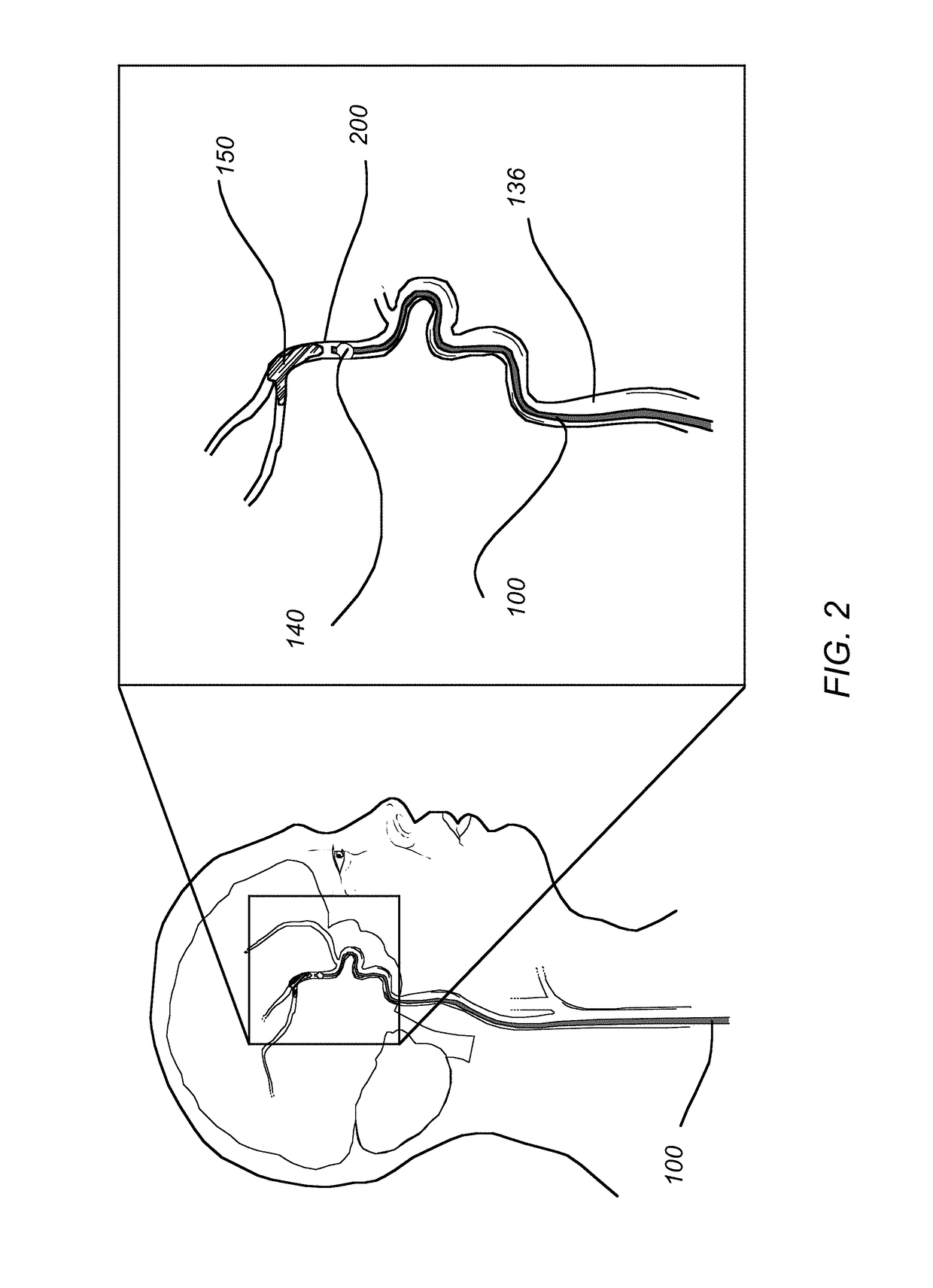Methods of use of a balloon-tip aspiration catheter for ischemic stroke interventions
a technology of ischemic stroke and balloon tip, which is applied in the field of ischemic stroke intervention methods, can solve the problems of shortage of metabolic requirements, tissue damage, and build-up of metabolic waste products, and achieve the effect of enhancing suction capabilities and removing clots
- Summary
- Abstract
- Description
- Claims
- Application Information
AI Technical Summary
Benefits of technology
Problems solved by technology
Method used
Image
Examples
example 1
[0102]In this example, an occluding-tip aspiration catheter having no vents may be used with a balloon guiding catheter and microcatheter instrument without the use of a clot retriever or distal embolic protection device. For instance, such a catheter may be used for endovascular intervention of ischemic stroke patients having occlusions that are past the petrous, cavernous or supraclinoid segments of the ICA in the anterior circulation or within the vertebral arteries or more distally in the posterior circulation. Unless described otherwise, the devices in each of these examples may be used to treat occlusions in the same or similar vicinity or other regions of the vasculature.
[0103]In use, it is good practice to prepare all instruments used during the procedure in advance such as flushing the instruments with saline to evacuate air and wet them prior to inserting them in the human vessels. The preparation may also be done throughout the medical procedure. The preparation of the oc...
example 2
[0110]In this example, an occluding tip aspiration catheter having vents may be used with a balloon guiding catheter and microcatheter instrument without the use of a clot retriever or distal embolic protection device. Such an assembly may be utilized for a similar treatment as described above.
[0111]The assembly may be primed and introduced into the patient similarly as described above, where the balloon guide catheter may be advanced intravascularly and the balloon of the guiding catheter may be inflated and the guidewire may be removed to allow for the insertion of the occluding-tip aspiration catheter through the lumen of the balloon guide catheter once in proximity to the occlusion. The occluding-tip aspiration catheter may then be inserted through the lumen of the balloon guide catheter and the microcatheter may be inserted through the lumen of the occluding-tip aspiration catheter and the assembly may be advanced into proximity of the clot for treatment, as described above.
[01...
example 3
[0114]In this example, an occluding tip aspiration catheter having no vents may be used with a balloon guiding catheter and microcatheter instrument in combination with the use of a distal embolic protection device but no clot retrieval device. Such an assembly may be utilized for a similar treatment as described above.
[0115]Once the devices have been prepared and positioned within the vasculature, as described above, the balloon-tip aspiration catheter may be positioned in proximity to the occlusion site with its balloon inflated. The microcatheter may be advanced distally beyond the aspiration catheter to cross the occlusion and a distal embolic protection device may be inserted through the lumen of the microcatheter and navigated past the distal end of the microcatheter until the embolic protection device is deployed within the vessel. The microcatheter may then be removed by pulling it proximally through the aspiration catheter and the vacuum may be drawn through the primary lum...
PUM
 Login to View More
Login to View More Abstract
Description
Claims
Application Information
 Login to View More
Login to View More - R&D
- Intellectual Property
- Life Sciences
- Materials
- Tech Scout
- Unparalleled Data Quality
- Higher Quality Content
- 60% Fewer Hallucinations
Browse by: Latest US Patents, China's latest patents, Technical Efficacy Thesaurus, Application Domain, Technology Topic, Popular Technical Reports.
© 2025 PatSnap. All rights reserved.Legal|Privacy policy|Modern Slavery Act Transparency Statement|Sitemap|About US| Contact US: help@patsnap.com



